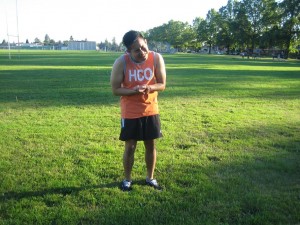Shingles is a painful skin rash that is caused by varicella zoster virus and can manifest as a band or strip and can even develop in a small area on one side of the face or body called herpes zoster.
Symptoms of shingles occur in stages. Initially, the affected person will experience headaches or sensitivity to light along with a feeling that he/she has flu without fever. After some time, there is itchiness, tingling sensation or pain in some areas and there is a band, line or small-sized areas that develop rash in several days later.
The rashes will develop into clusters of blisters which are filled with fluid and then crust over. It takes about 2-4 weeks for the blisters to heal and leave scars on the skin. Some people will develop only mild rash, but there are some that do not develop rashes at all. Severe symptoms such as dizziness or weakness, rashes or pain on the face, changes in the vision require immediate medical attention. An individual suffering from chickenpox can have shingles and people older than 50 years old with a weakened immune system are susceptible to this condition.
Causes
- Shingles can be caused by fatigue and stress
- Injuries to the skin where the rashes develops
- Weakened immune system due to age, underlying diseases and drug-related diseases
- Those who are suffering from AIDS/HIV
The rashes will develop into clusters of blisters which are filled with fluid and then crust over. - Cancer and ongoing radiation treatments
Treatment
- Take the prescribed over-the-counter pain medications such as aspirin and ibuprofen to minimize the pain and inflammation of the affected areas.
- Add colloidal oatmeal when taking a bath. In a bathtub with cool water, sprinkle a packet of colloidal oatmeal in the water and instruct the individual to soak in the bath. This helps lessen the irritation and itchiness caused by shingles.
- Apply cold compresses on the affected area especially with blisters in order to help lessen the inflammation caused by the blisters and also helps in minimizing the pain and itchiness. Apply lotions such as calamine after a cold compress
- Encourage the individual to take a break and rest in order to help reduce the level of stress and strengthen the immune system of the body in helping fight illness.
- Avoid picking and scratching the blisters since they eventually crust over and fall off naturally.
- Cornstarch or even baking soda can be used on the blisters in order to promote the drying up of the sores and for fast healing of the condition.
- Soak crusted sores using tap water or Burrow’s solution in order to eliminate the crusts, lessen oozing and relax the skin. Burrow’s solution is a mixture of aluminum sulfate, acetic acid, calcium carbonate and water used as a topical astringent in treating different kinds of skin disorders.

